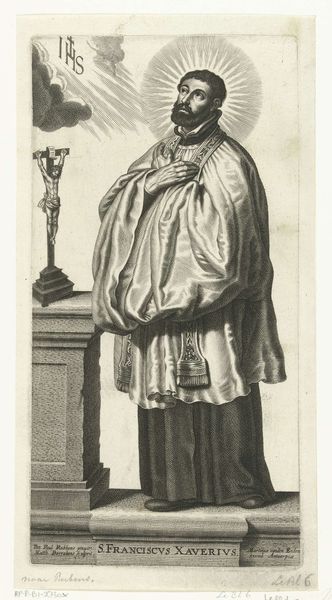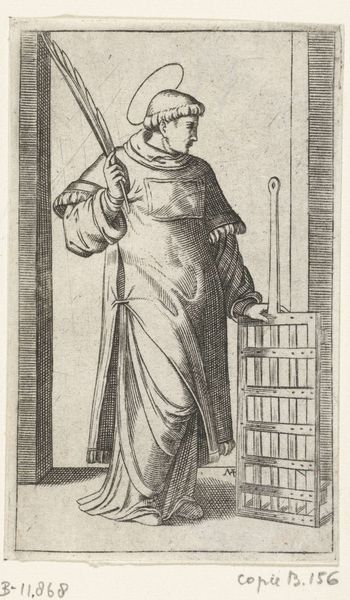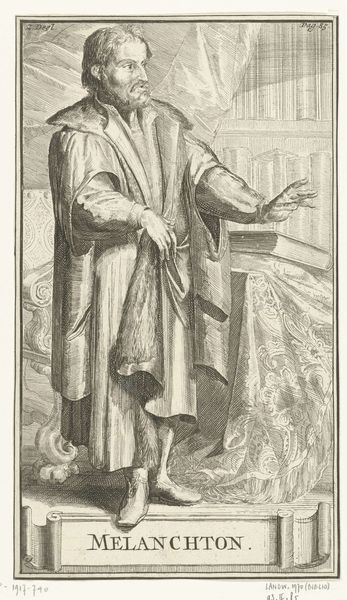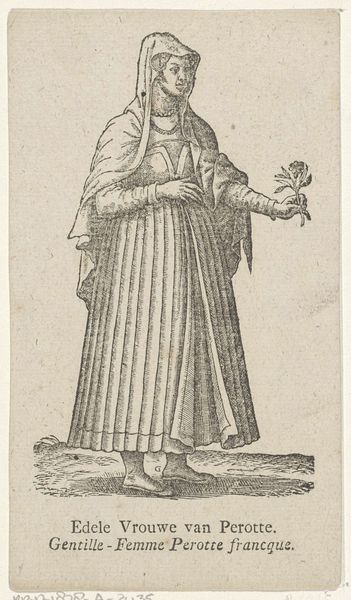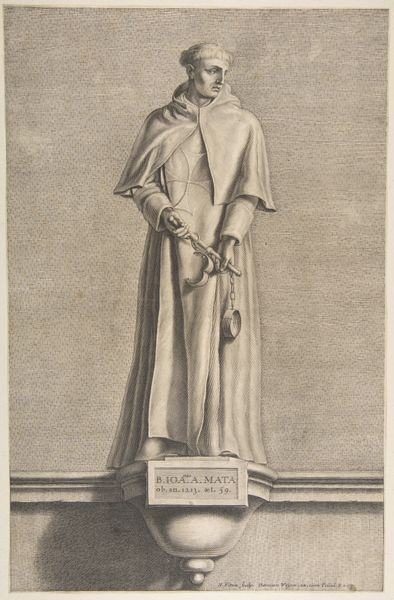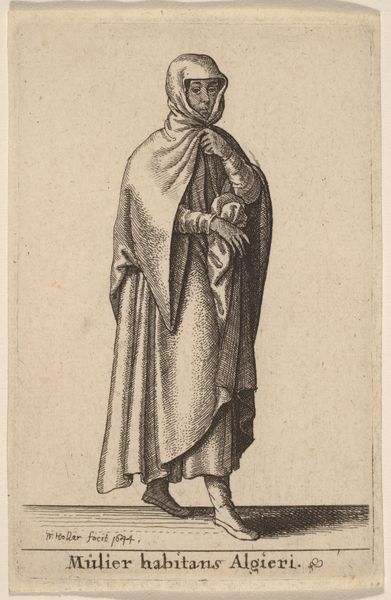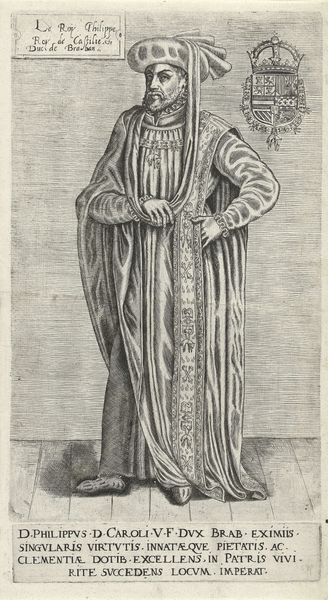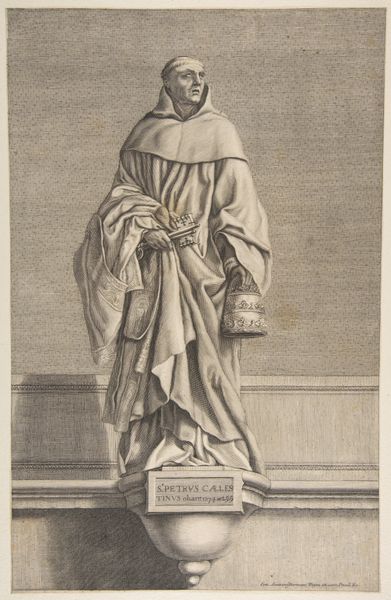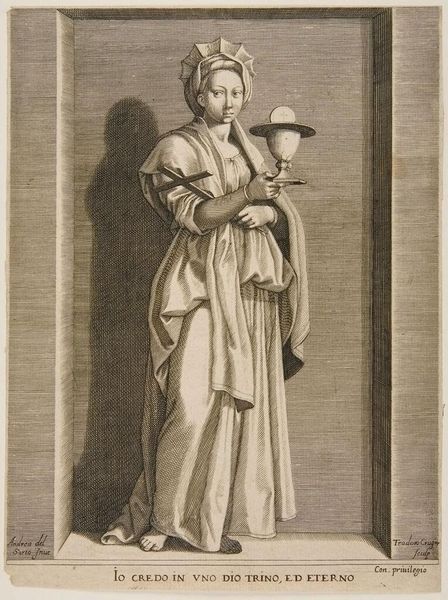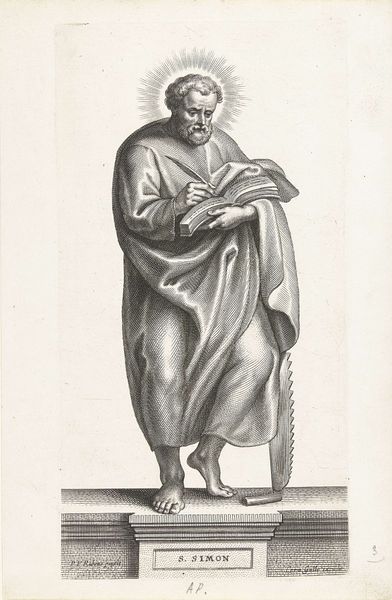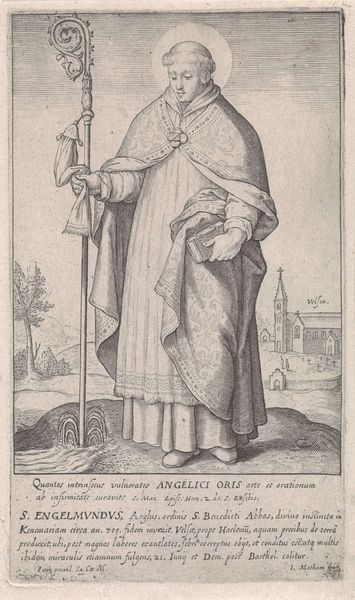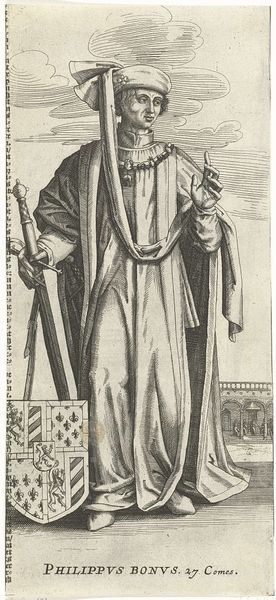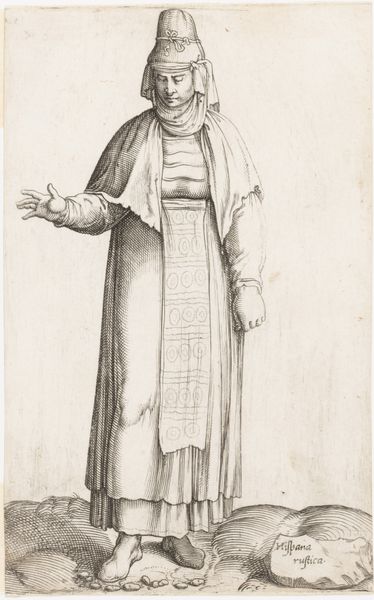
print, intaglio, engraving
#
portrait
#
baroque
# print
#
intaglio
#
old engraving style
#
portrait drawing
#
history-painting
#
engraving
Dimensions: width 216 mm, height 304 mm
Copyright: Rijks Museum: Open Domain
Editor: We're looking at "Heilige Augustinus van Hippo," an engraving dating from 1620 to 1650, made by Guilliam de Gheyn. The incredible detail achieved in this intaglio print really stands out to me. What are your initial thoughts about its composition and structure? Curator: Observe the deliberate arrangement of lines, the strategic deployment of light and shadow, and the calculated distribution of textures. These formal elements are paramount. The contrast between the figure of Augustine and the flat, almost decorative background is particularly striking. Consider the way the linear precision defines the textures of the garments versus the more open, atmospheric treatment of the background. Editor: Yes, the sharp detail in Augustine's robes contrasting with the backdrop is so striking! Also, I see a geometric form—an oval—defined by Augustine's halo, the book near his right arm, and even in the shape of his beard. What could that emphasis on shape contribute to our understanding? Curator: Let us engage in some semiotic interpretation, then. The geometric exactitude imposed by these shapes implies a structuring intelligence, which aligns directly with the historical Augustine’s efforts to codify and systematize Christian thought. These forms also serve to concentrate the viewer's gaze upon Augustine's face, further reinforcing his role as a central figure of theological significance. Notice too how his raised hand bisects that plane, introducing further tension and balance. Editor: That’s a compelling reading. I see how the formal aspects contribute to the content! Thanks for pointing that out! Curator: Of course. These visual cues prompt a formal interrogation that deepens our perception of not just the aesthetics of the work, but its symbolic resonances. Editor: Right. I see now how paying attention to composition, light, and line brings a richer understanding to this work. Curator: Precisely. A sensitivity to such formal elements can reveal depths that might otherwise be missed.
Comments
No comments
Be the first to comment and join the conversation on the ultimate creative platform.

